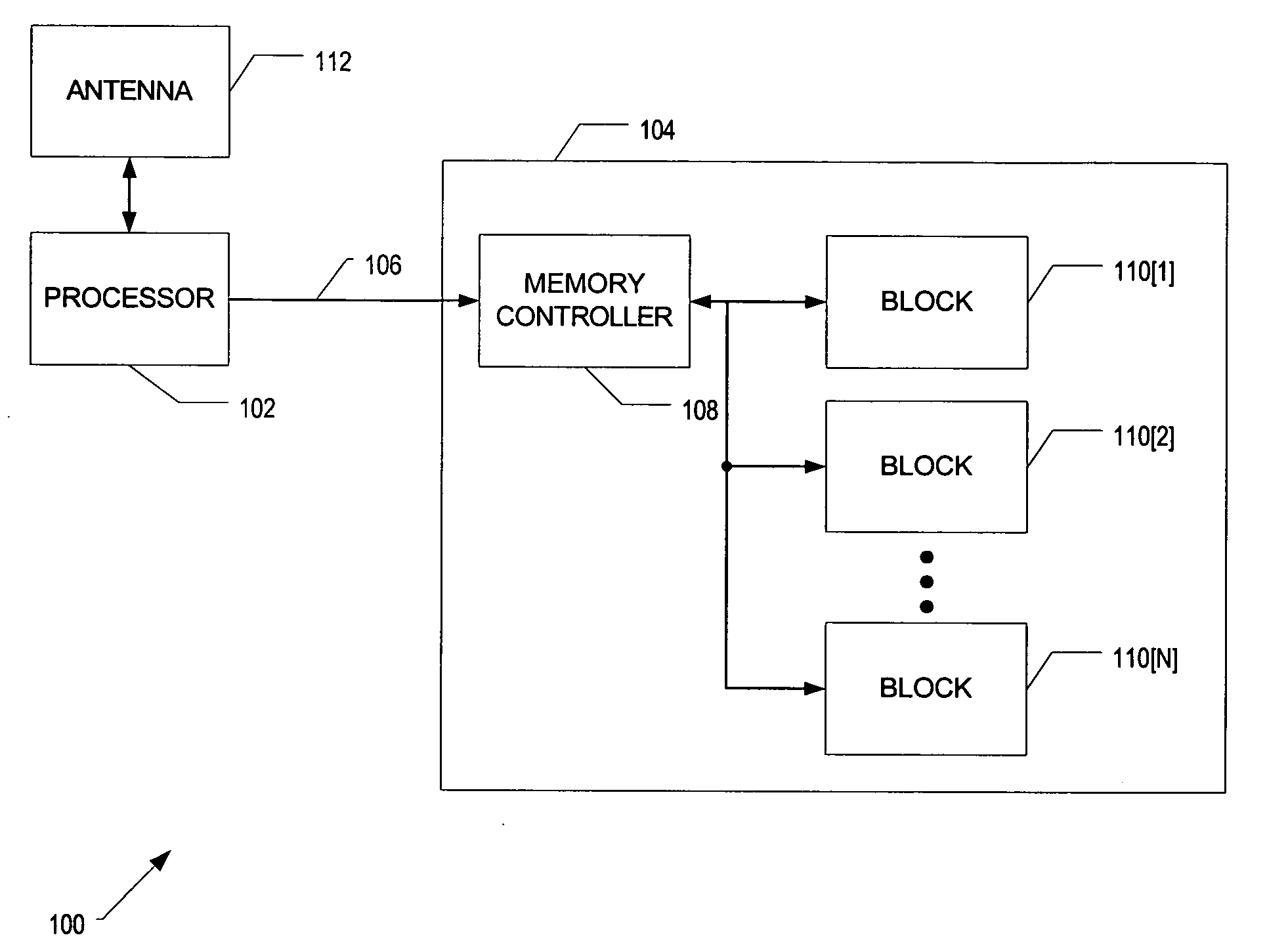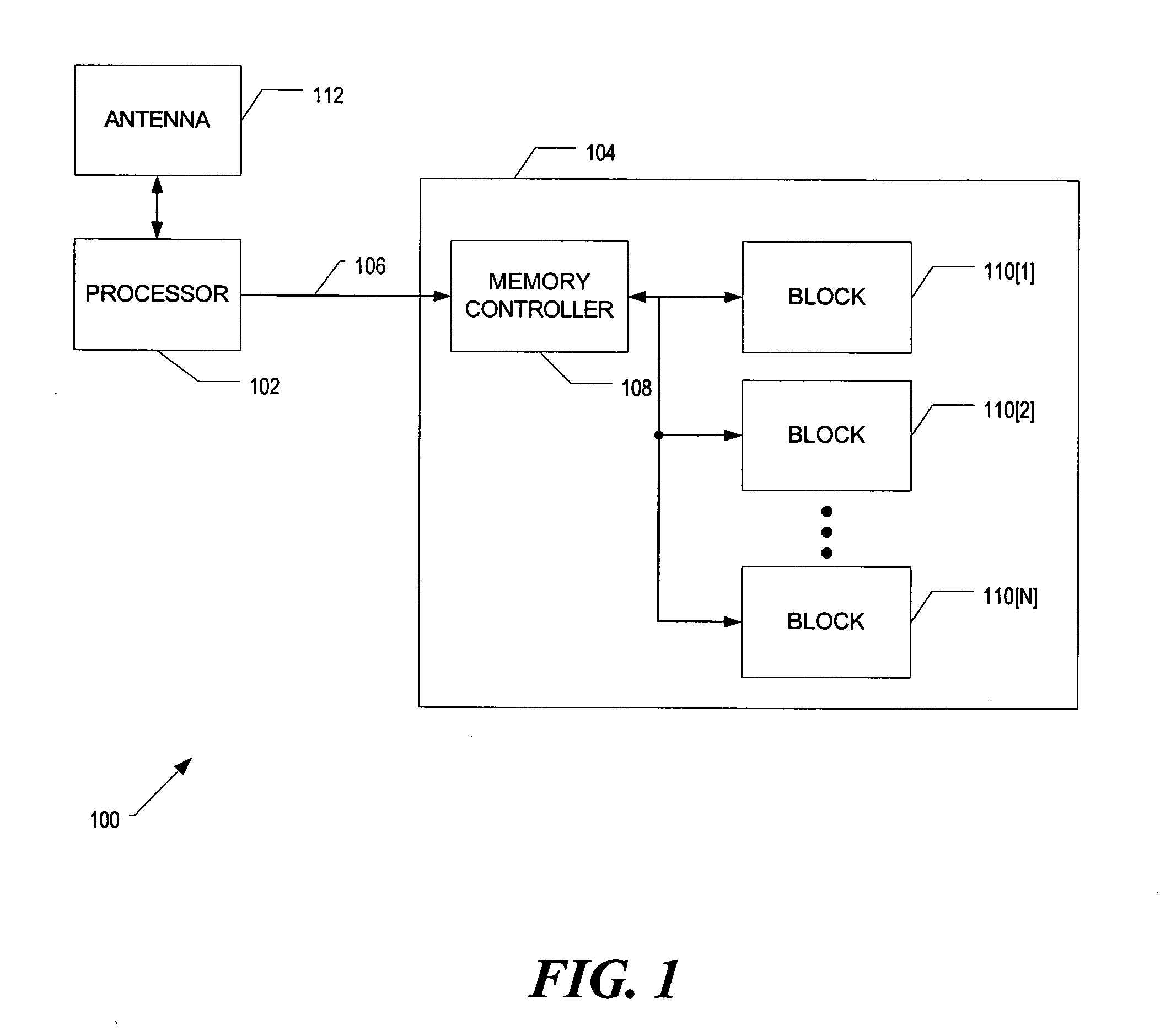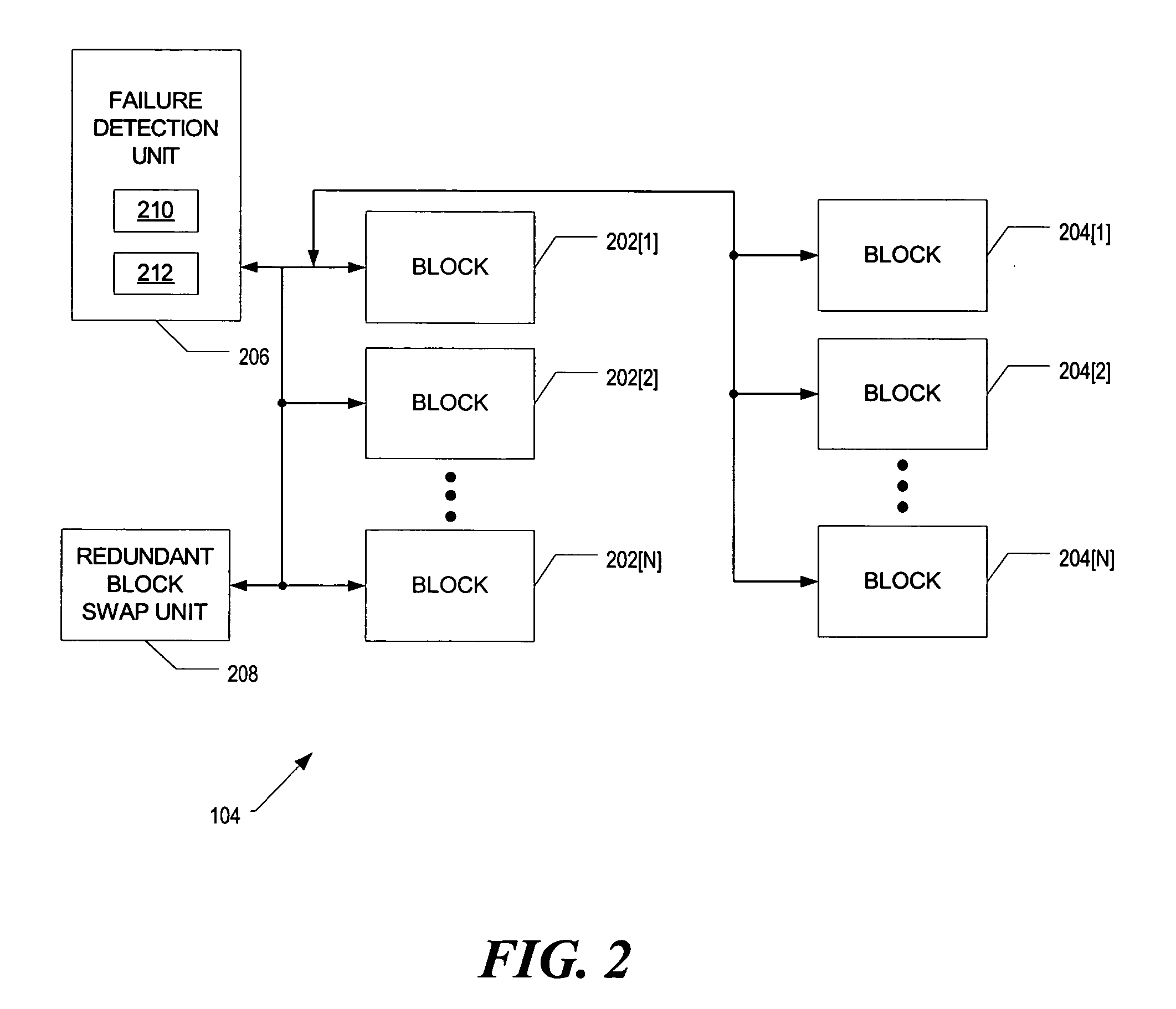Memory defect detection and self-repair technique
- Summary
- Abstract
- Description
- Claims
- Application Information
AI Technical Summary
Problems solved by technology
Method used
Image
Examples
Embodiment Construction
)
[0011] According to some embodiments, a memory device having multiple memory units includes one or more redundant memory units. Upon detection of an electrical characteristic indicating a failing memory unit, one of the redundant memory units is used to replace the failing memory unit. Detection of failing memory units may be via current, voltage and / or resistance monitoring. If the electrical characteristic monitored exceeds a predetermined threshold, a memory unit is considered failing. The failing memory unit is removed from further use. The redundant memory unit is programmed to be accessible at the memory address of the removed memory unit. Replacement occurs automatically (that is, without user intervention).
[0012] In the following description, numerous specific details are set forth. However, it is understood that embodiments of the invention may be practiced without these specific details. In other instances, well-known methods, structures and techniques have not been show...
PUM
 Login to View More
Login to View More Abstract
Description
Claims
Application Information
 Login to View More
Login to View More - R&D Engineer
- R&D Manager
- IP Professional
- Industry Leading Data Capabilities
- Powerful AI technology
- Patent DNA Extraction
Browse by: Latest US Patents, China's latest patents, Technical Efficacy Thesaurus, Application Domain, Technology Topic, Popular Technical Reports.
© 2024 PatSnap. All rights reserved.Legal|Privacy policy|Modern Slavery Act Transparency Statement|Sitemap|About US| Contact US: help@patsnap.com










